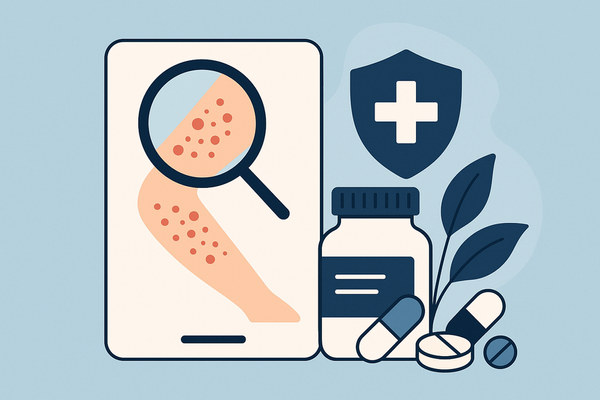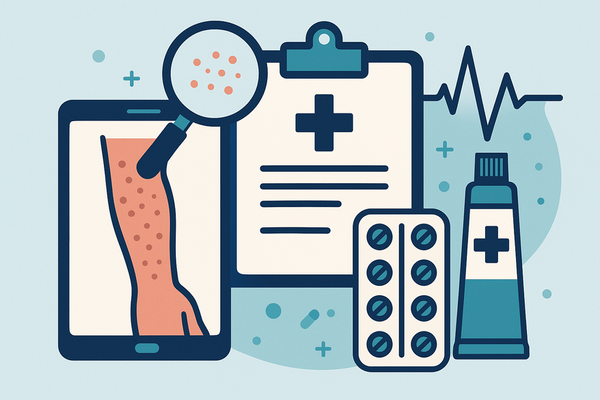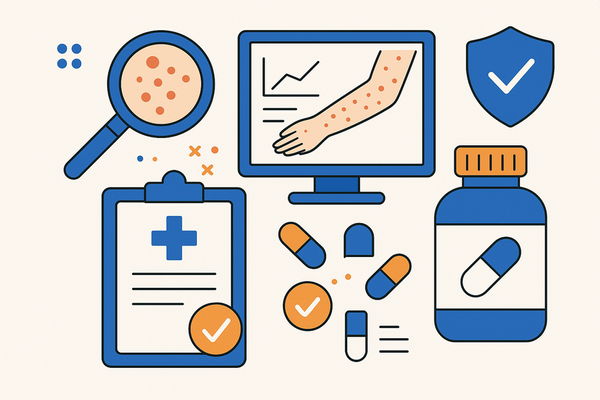Work-Related Skin Rash Prevention: Essential Strategies to Protect Employees
Learn essential strategies for work-related skin rash prevention to protect employees, reduce sick days, and maintain a productive workplace.
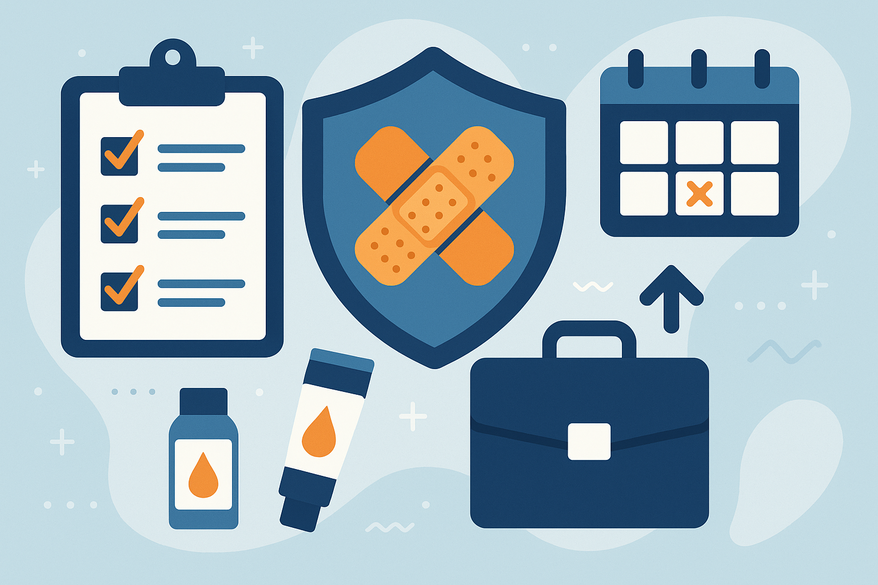
Estimated reading time: 8 minutes
Key Takeaways
- Understand occupational dermatitis, including irritant and allergic contact types.
- Recognize common irritants, allergens and industry-specific risk factors.
- Implement appropriate PPE and barrier creams alongside daily skin care.
- Adopt hygiene, safe chemical handling, and hypoallergenic products.
- Detect early symptoms, seek medical advice, and arrange workplace adjustments.
- Follow the hierarchy of controls and foster a proactive safety culture.
Table of Contents
- Introduction
- Understanding Work-Related Skin Rashes
- Causes and Triggers
- Tips on Preventing Work-Related Skin Rashes
- Managing Occupational Dermatitis
- Best Practices and Workplace Strategies
- Conclusion
Introduction
Work-related skin rash prevention means taking steps now to stop occupational dermatitis before it starts. Work-related skin rashes are inflammatory conditions caused or worsened by workplace exposures. Occupational dermatitis covers both irritant and allergic contact dermatitis. Preventing these rashes reduces pain, cuts down on sick days, and keeps teams at full strength. For official guidance, see the HSE dermatitis guidance.
Understanding Work-Related Skin Rashes
Definition & Types
Irritant contact dermatitis occurs when the skin’s protective barrier is worn down by repeated exposure to harsh substances, leading to dryness, cracks, and soreness. Allergic contact dermatitis is a delayed immune reaction—days after touch, red, itchy patches appear. A solid grasp of these types is the first step in prevention.
For further details, refer to the AAFP overview.
Symptoms & Signs
Early indicators include:
- Redness or erythema
- Itching or pruritus
- Dryness or xerosis
- Mild swelling or edema
If untreated, rashes may progress to blistering, skin fissures, and scaling. Common sites are the hands, forearms, and face. Early detection is key.
Risk Factors by Industry
Certain sectors face elevated risks:
- Healthcare: frequent hand-washing and disinfectants
- Cleaning services: detergents and solvents
- Food service: wet hands and food acids
- Construction: cement, dust, resins
- Manufacturing: oils, coolants, chemicals
Awareness of these factors helps tailor prevention measures. See the HSE dermatitis guidance for more.
Causes and Triggers
Common Irritants & Allergens
Typical workplace offenders include:
- Irritants: solvents (acetone, toluene), resins, oils, cement, fiberglass, dust, UV radiation
- Allergens: latex, rubber accelerators, formaldehyde releasers, fragrances, nickel
Identifying these helps direct prevention and patch testing. Learn more in the AAFP overview.
Differentiating Irritant vs. Allergic Contact Dermatitis
Irritant dermatitis results from direct barrier damage, appears quickly after exposure, and can affect anyone with sufficient contact. Allergic dermatitis requires immune sensitization, takes days to show, and affects only sensitized individuals. Both appear as red, itchy skin—patch testing is essential.
Examples of Workplace Triggers
- Chemicals: epoxy resins, industrial paints, fuels
- Wet work: repeated handwashing, glove occlusion, immersion in water
- Cleaning agents: bleach, ammonia, quaternary ammonium compounds
- Physical agents: tool friction, pressure from grips, UV light
Spotting real-world triggers at the job site allows targeted exposure reduction. Refer to the HSE guidance.
Tips on Preventing Work-Related Skin Rashes
Personal Protective Equipment (PPE)
Select PPE carefully:
- Gloves: nitrile for chemicals; vinyl or neoprene for wet work; leather for abrasion/heat
- Aprons/sleeves: chemical-resistant or waterproof
- Face shields and goggles: prevent splashes
Don and doff gear properly: check gloves for holes, remove inside-out to trap contaminants, wash and dry hands afterward. Barrier creams add protection but don’t replace gloves. See the Cole Cosmetics workplace skin health blog.
Routine Skin Care Practices
- Use mild, pH-balanced cleansers—no harsh soaps
- Rinse immediately after exposure and pat dry with a soft towel
- Apply a fragrance-free emollient at least twice daily; see fragrance-free moisturizer suggestions
Avoid high-alcohol hand sanitizers—they strip natural oils. For more tips, visit the Family Doctor workplace skin care guide.
Workplace Hygiene & Chemical Handling
- Rotate tasks to limit wet work or chemical use
- Install soft-water hand-washing stations with gentle soaps
- Change and launder contaminated clothing promptly
Proper storage and handling reduce spills and splashes. See the AAFP overview for details.
Hypoallergenic Products & Safe Cleaning Methods
Choose hypoallergenic, unscented cleaners. Whenever possible, switch to plant-based or enzyme formulas and use dishwashers/utensils to limit hand contact. Refer to the HSE guidance.
Managing Occupational Dermatitis
Early Detection & Symptom Management
Act on first signs: inspect skin daily for redness, itching, or dryness; report issues promptly; apply emollients liberally and use prescribed topical corticosteroids. Consider keeping a photo log for visual tracking and use the AI-powered Rash Detector app for instant analysis.
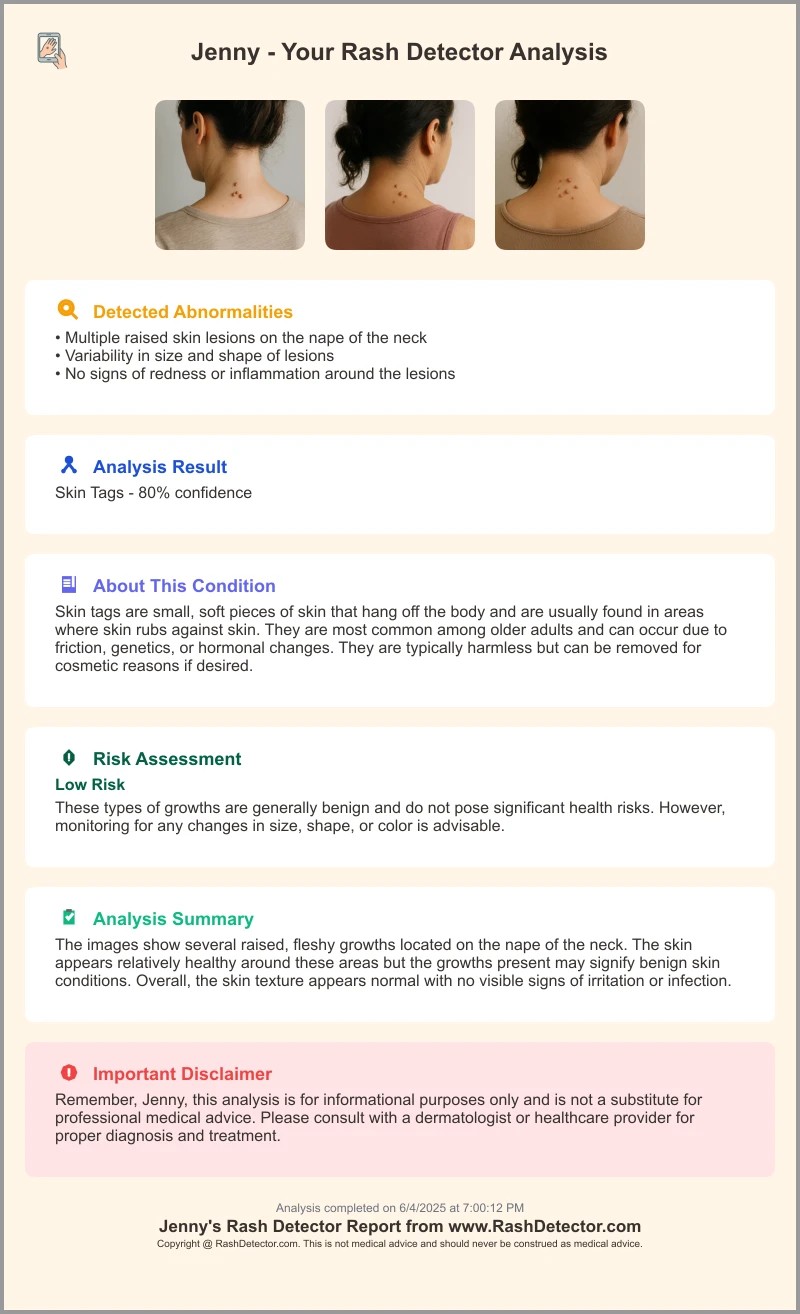
When to Seek Medical Attention
Consult a doctor if symptoms persist or worsen despite home care, if you notice infection signs (pus, increased pain, warmth), or if the rash interferes with daily activities. A dermatologist or occupational medicine specialist can perform patch tests and prescribe stronger treatments.
Workplace Adjustments
- Reassign to lower-exposure tasks (dry work, clerical duties)
- Install engineering controls: improved ventilation, closed transfer systems
- Update risk assessments and personal exposure records
These adjustments keep workers safe without loss of income. For recommendations, see the NIOSH skin exposure recommendations.
Best Practices and Workplace Strategies
Employer Responsibilities & Hierarchy of Controls
Employers should:
- Eliminate hazards by removing harmful chemicals
- Substitute safer materials when elimination isn’t possible
- Implement engineering controls: local exhaust ventilation, sealed stations
- Enforce administrative controls: safe procedures, task rotation
- Provide PPE as a last line of defense
Document risk assessments, prevention policies, and training records. See the HSE guidance and NIOSH recommendations.
Employee Education & Engagement
Staff training builds a safety culture: teach hazard recognition, skin inspection routines, correct PPE use, and skin care steps. Encourage early symptom reporting without fear of reprisal. Peer support and toolbox talks keep skin health top of mind.
Case Studies & Expert Recommendations
Case Study A: A manufacturing plant replaced solvent-based cleaners with enzyme formulas; dermatitis rates fell by 60% in six months.
Case Study B: A hospital installed skin-safe hand-wash stations and barrier cream dispensers; staff sick days for dermatitis dropped by 45%.
Experts at CDC NIOSH endorse the hierarchy of controls and regular health monitoring as top strategies. See their recommendations.
Conclusion
Preventing work-related skin rashes requires a blend of proper PPE, daily skin care, safe chemical handling, and a strong safety culture. Early detection, medical support, and workplace adjustments prevent chronic issues. Employers and employees share responsibility: conduct risk assessments, provide training, and maintain open communication. Start implementing these strategies today, perform regular skin checks, and consult professionals at the first sign of a rash. Protect skin, maintain productivity, and foster a healthier workplace through proactive prevention.
FAQ
What is occupational dermatitis?
Occupational dermatitis is skin inflammation caused or exacerbated by workplace exposures. It includes both irritant and allergic contact dermatitis.
How can I reduce my risk of work-related skin rashes?
Use appropriate PPE, follow routine skin care with mild cleansers and emollients, rotate tasks to limit exposure, and choose hypoallergenic products.
When should I see a doctor?
If a rash persists or worsens despite home care, shows signs of infection (pus, warmth), or interferes with daily activities, seek medical attention.
What should employers do to protect workers?
Follow the hierarchy of controls: eliminate or substitute hazards, implement engineering and administrative controls, and provide PPE. Document risk assessments and offer regular training.


